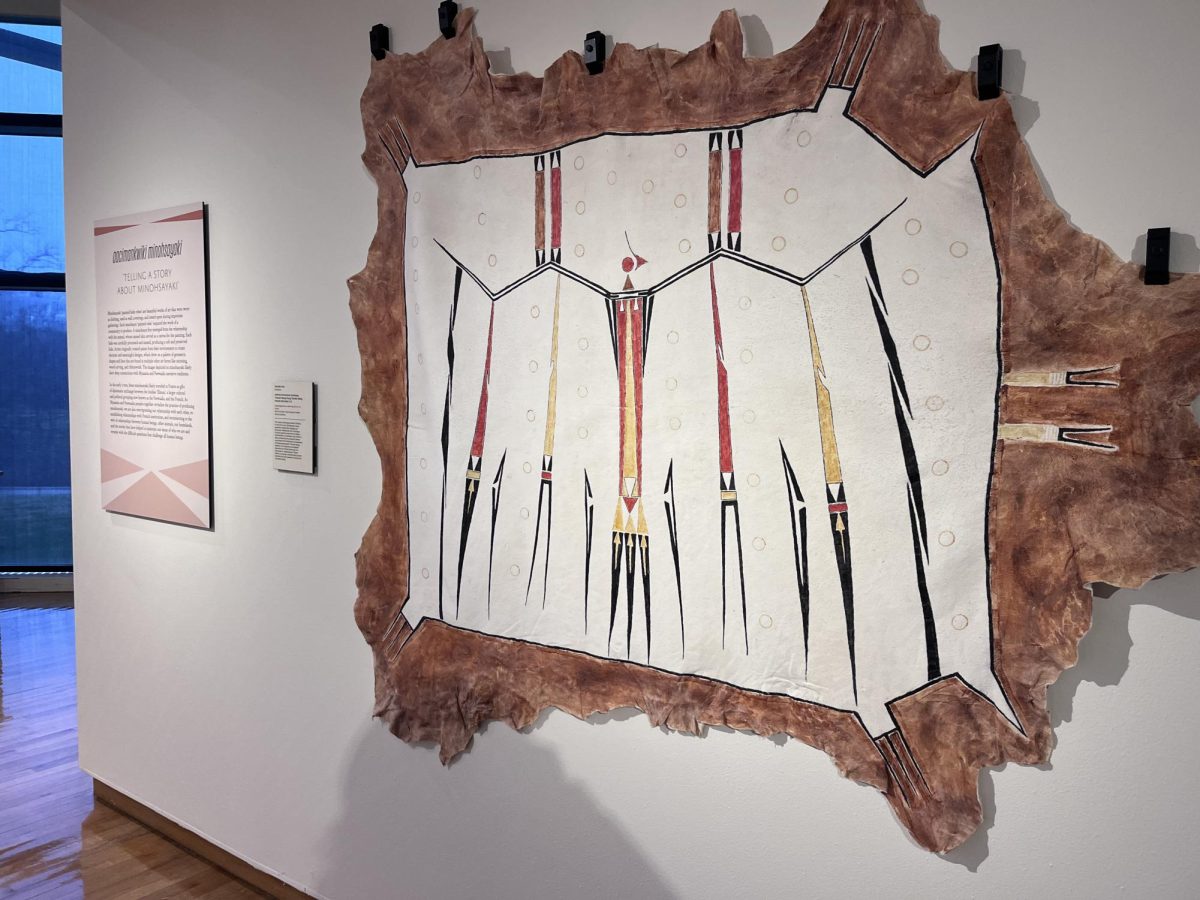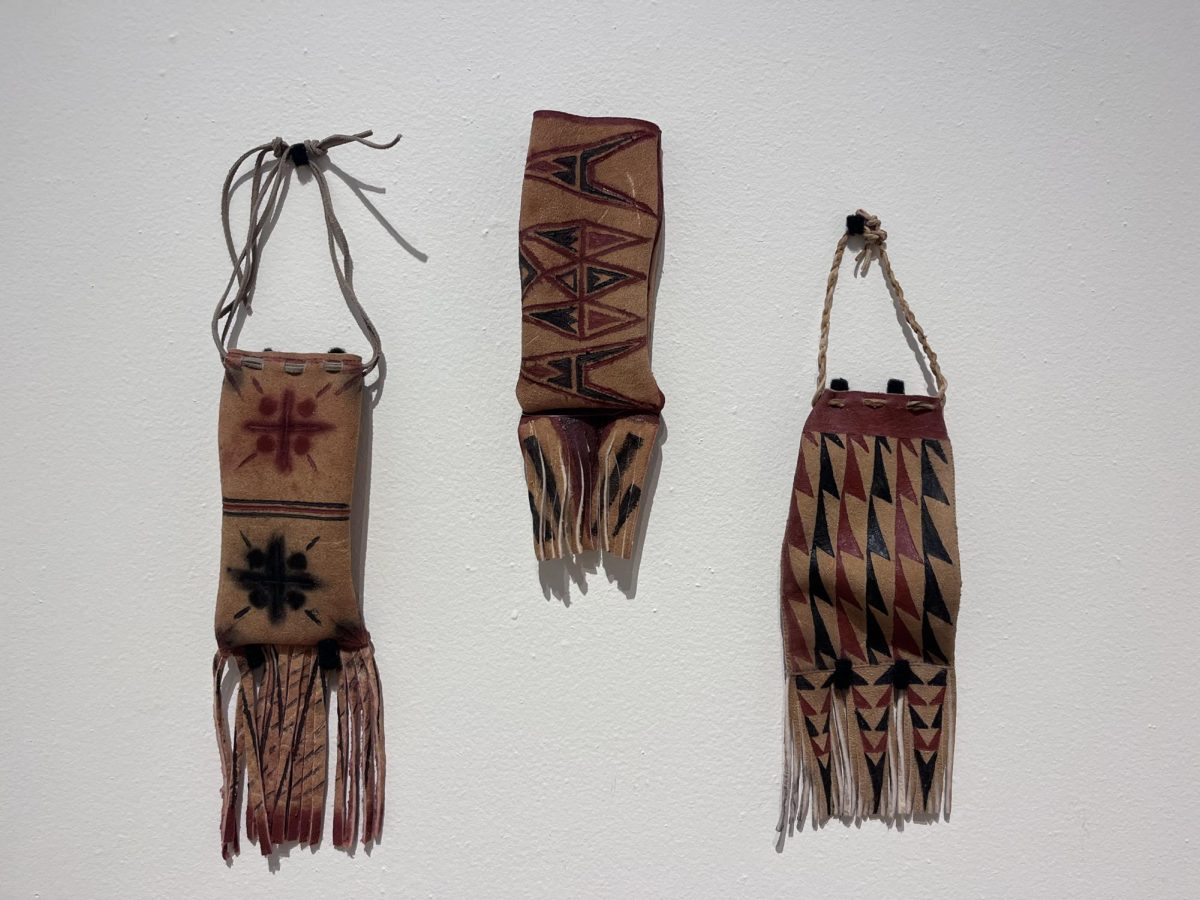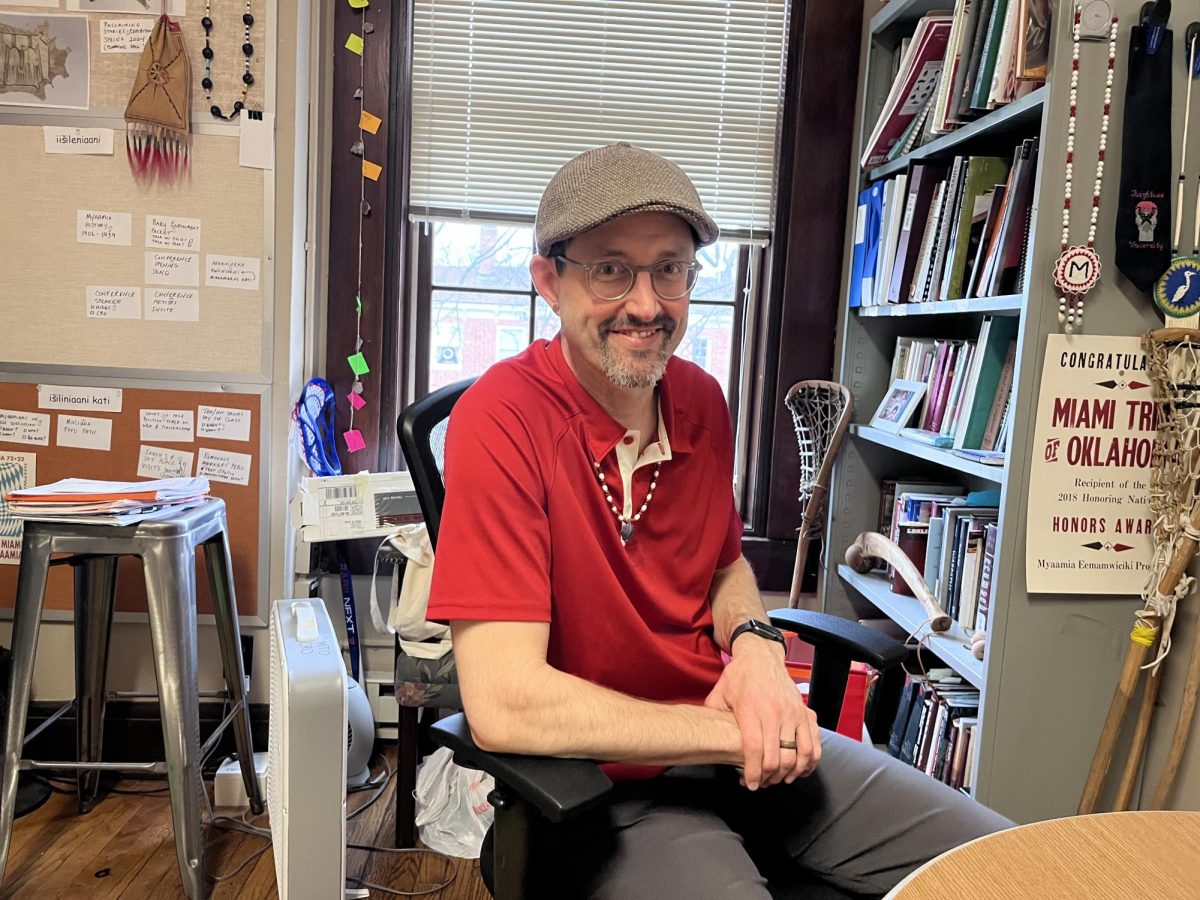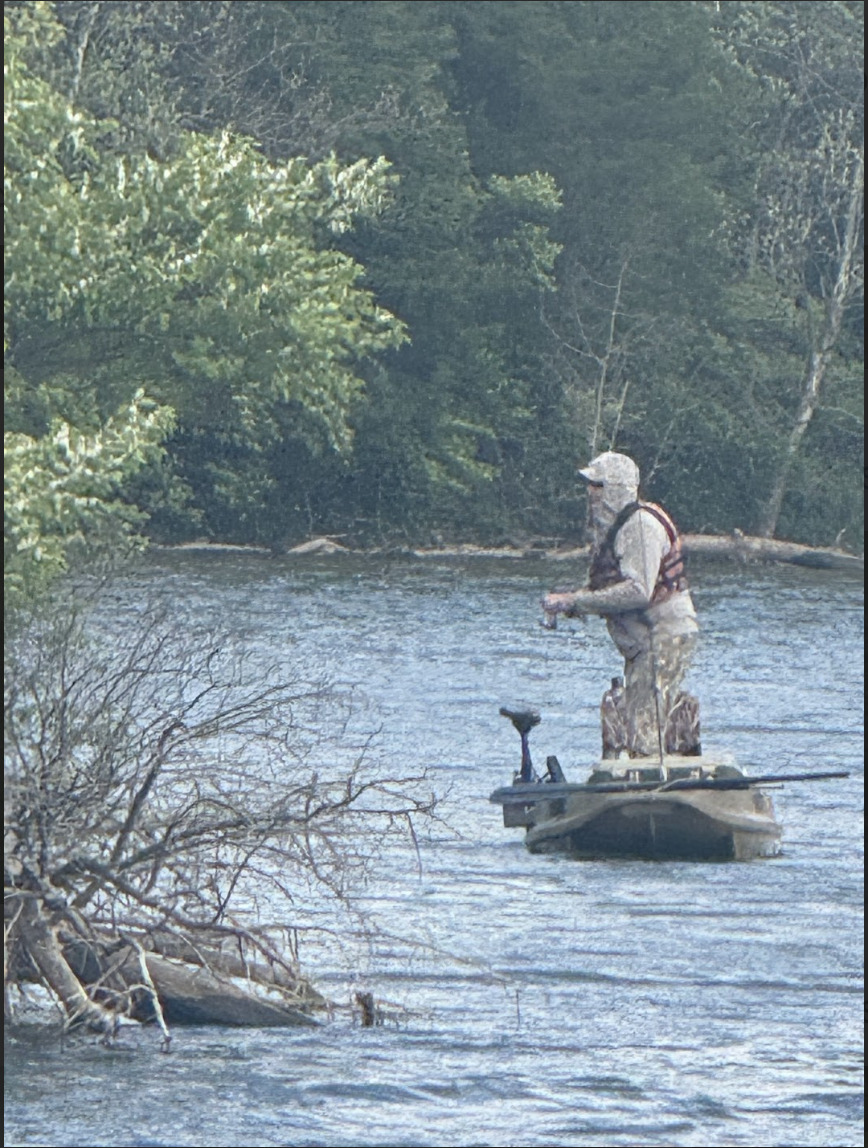Myaamia and Peewaalia’s painted robes have garnered attention in Paris, and now the history and tradition that these two tribes developed in the 17th century is being brought to Oxford.
Minohsayaki, or painted robes, were given as gifts or trade during a reciprocal period in the late 1600s and early 1700s. They are either made from bison or deer hide and are painted with charcoal or ground hematite. The French royal family kept these robes and served as education for the French royal family in that period.
From now until June 8, the Richard and Carole Cocks Art Museum will hold the Minohsayaki “Painted Robes” exhibition, featuring the modern work of the “Reclaiming Stories” team.

George Ironstrack, assistant director of the Myaamia Center, and Elizabeth Ellis, associate professor of history at Princeton, flew to Paris to visit the robes in the Musée du Quai Branly – Jacques Chirac to better understand the painted robes. They were also among a group dedicated to reopening the tradition. Both scholars have made their own bags, which are now displayed on the museum’s walls, alongside blankets and robes.
“My work… [I feel] embarrassment. I have not had a lot of time to practice painting hides, or painting in general,” said Ironstrack, who has attended workshops for the past two summers. “But I feel a lot of pride in all the bags hanging up because it’s about the collective effort … and so we are already trying to see the seeds being planted for the renewal of the practice.”
On their visit to Paris, both Ironstrack and Ellis were able to view the robes in an open and bright lab space — as they are not on display in the museum and are cared for in collection spaces. Ironstrack recalls how they had to put their belongings in lockers and that they could only take their iPads or notebooks with them for the analysis.
“It was like, I don’t know how to describe it, like giddy kids waiting to go see their grandparents,” Ironstrack said. “These are objects that we’ve looked at in pictures for 20+ years, so then to see them on the other side of glass was really exciting.”
Ironstrack said he experienced a variety of emotions.
“At first we were in shock to be able to be in the presence of such objects because we’ve looked at them from a distance for so long,” he said. Their sense of shock faded as they spent more time with the robes.
“I am grateful that this artform has been preserved and that we are able to study and learn from them,” said Haley Shea, research associate at the Myaamia Center. “Objects like this that are preserved really have a way of connecting us with the people who created them and we are able to learn so much from studying them.”
In a Feb. 22 Miami Alumni webinar about the painted robes, Ironstrack and Ellis discussed findings about each piece and explained the significance of the symbols on the robes.

For instance, holes that were left over from the killshot wounds were preserved out of memory for the animal. Even the negative space in the robes is filled with imagery, with tiny circles on the robes representing hailstones, while painted feathers representing transformative powers.
“The references to thunder, to spiritual power, to hail stones have been really present in a lot of what we have looked at, which we think tells us that this is something that’s really important that our ancestors definitely wanted to convey to their trading partners, allies and other folks,” Ellis said in the lecture.
An area can also be covered in hide glue, which makes it shimmer in different lighting. Hourglass shapes reminiscent of hair bows can be seen on some robes, showing ornamentation that both Myaamia and Peewalia women wore back then and today.
In the early 17th century, the hides were primarily made by women in those tribes. The reason they remain in such good condition is a combination of the skill of the work and the use of archival processes like spraying pesticides to ward off insects.
“These forms are things that would have coded to everyone that is a Miami and Peoria cultural production,” Ellis said in the lecture.
The next Minohsayaki ‘Painted Robes’ event will be at 3 p.m. March 16, “Requickening and Reawakening the Dormant,” at the art museum. This event will be led by Michael Galban (Historic Site Manager of Ganondagan State and curator of the Seneca Art & Culture Center in upstate New York) who will lecture on the art of hide painting and exploring materials and techniques.







